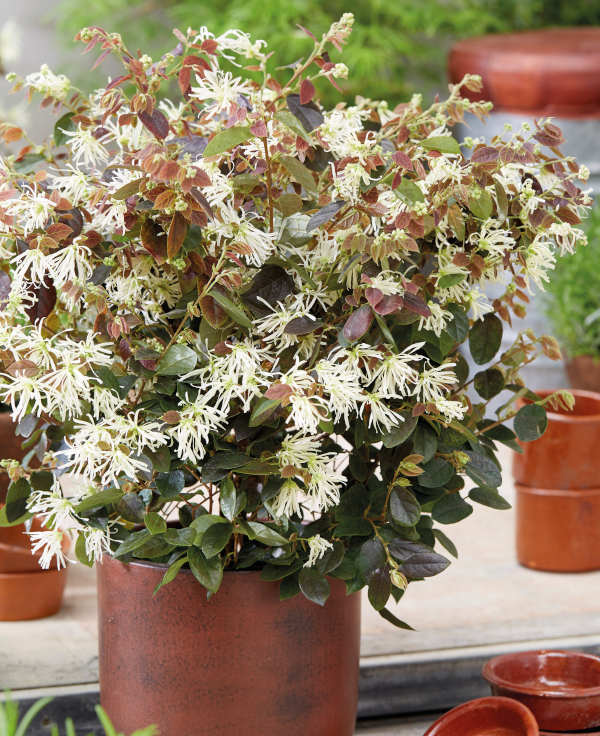How to grow Loropetalum
A relative newcomer to UK gardens, loropetalum is a rounded evergreen shrub originating from woodland in the Himalayas, China, and Japan. It is grown for its showy, evergreen foliage and bright, spider-like flowers from late winter to early spring. The blooms bear a strong resemblance to close relative hamamelis (witch hazel).
Loropetalum is also known by the common name Chinese fringe flower.
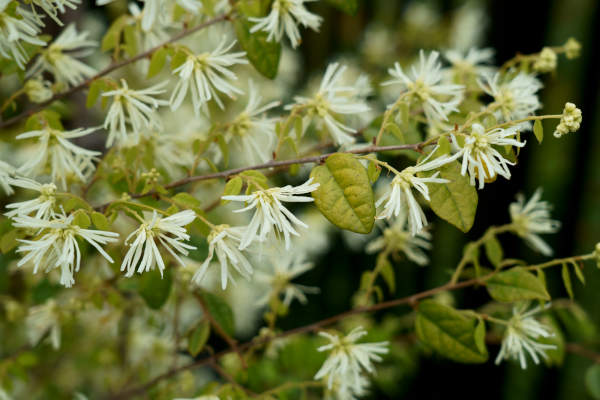
Zantedeschia is a genus of flowering plants from the family Araceae and is native to southern Africa. With a rich history dating back to the Ancient Romans, these deciduous or semi-evergreen perennials have been used as a symbol of celebration. Zantedeschia was Named after Professor Giovanni Zantedeschia, an Italian botanist.
There are two main forms of Zantedeschia: hardy and tender. Hardy forms of the plant can be grown outdoors, enjoy moist soil and full sun or partially shaded conditions - these are known as Arum lilies. Tender forms of Zantedeschia prefer being grown in containers or pots and should be brought inside over the winter - these are known as Calla lilies.
With tuberous flora in all colours from whites, yellows and oranges to deep reds and purples, Zantedeschias are not to be overlooked in any garden, as long as they have sufficient sunlight to grow in.
Ready to learn more about growing Zantedeschia? Read on for all there is to know...

Key Information
Soil pH
Position
Hardiness

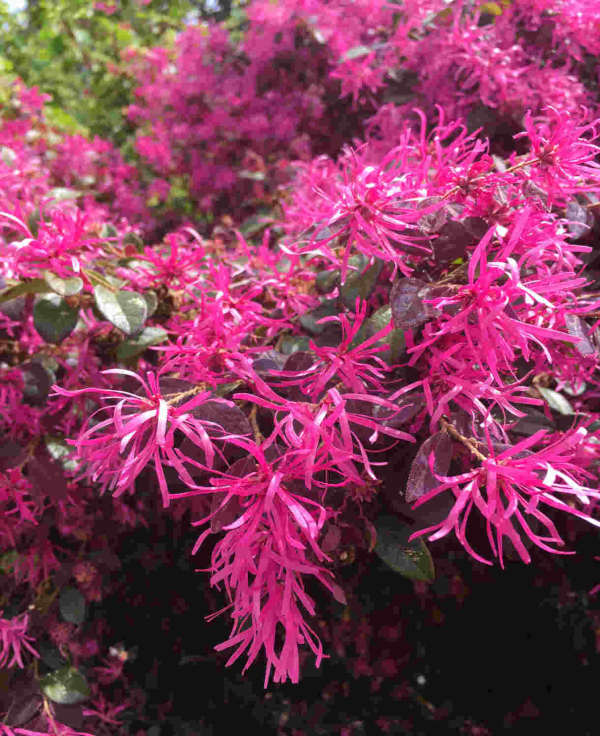
Where & when to plant Loropetalum
Position- A partially shaded, sheltered spot (the leaves may scorch in full sun or wind)
Soil- Fertile, humus-rich, moist, and well drained. Avoid waterlogged soil.
Flowering Period- Late winter to spring
Hardiness- Most are hardy to around -5°C. Loropetalum chinensis ‘Ruby Snow’ is hardy to -10°C.
For best results, plant in autumn or spring. An autumn planting can be done by those gardening in mild conditions (and broadly speaking, this is the southern half of the UK). For those liable to cold winters, it is best to wait until spring (generally the northern half of the UK). Planting can also be carried out in summer, though be prepared to water regularly.
Loropetalum is ideal for a woodland garden or shrub border. Its compact height and spread also suits a container or mixed border.
How to plant Loropetalum
In the ground
- Clear the chosen area of weeds.
- Dig a planting hole several times larger than the root ball. If your soil is on the heavy side, add a handful or two of horticultural grit. Now is the time to improve soil with a generous addition of well-rotted organic matter.
- Place the plant in the hole, ensuring the top of the root ball sits level with the surface of the soil. Too low and the plant may rot, too high and the roots can dry out.
- Backfill with soil and firm in gently.
- Soak well with water.
- Mulch with well-rotted organic matter.
In a container
- Choose an appropriate container (as large as you can), ensuring there are plenty of drainage holes.
- Use a good quality potting compost with a good amount of horticultural grit mixed in, and, if not already present in the compost (check the description on the bag) some slow-release fertiliser granules.
- Start by partially filling the pot with compost; enough so that when placed on it the upper surface of the root ball is about 3cm lower than the top of the pot.
- Infill all the space surrounding the root ball with compost, firming down with your fingers then adding a little more so the plant is held tight.
- Pick up the pot and lightly tap on the potting bench or ground a few times to help further settle the compost around the plant.
- Soak well with water.
- A mulch with horticultural grit will look attractive and help to prevent a ‘cap’ or crust forming on the top of the compost (something container plants can suffer due to the artificial nature of their watering).
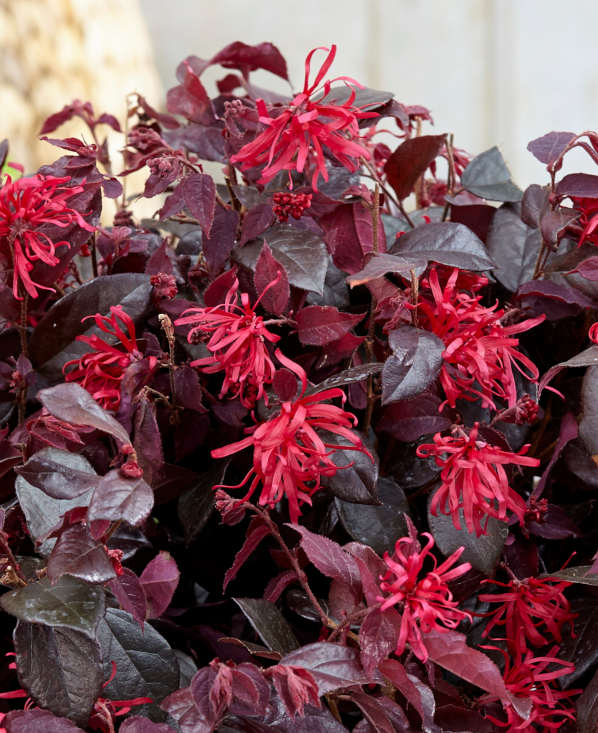
What to plant with Loropetalum
This is a wonderfully versatile shrub at home in a wide range of styles. We love seeing it at its peak with other winter-interest beauties such as colourfully-stemmed cornus, Viburnum x bodnantense ‘Dawn’, hamamelis, sarcococca, Daphne odora ‘Rebecca’, chimonanthes, and edgeworthia. A smattering of snowdrops and hellebores at their feet will complete the winter wonderland.
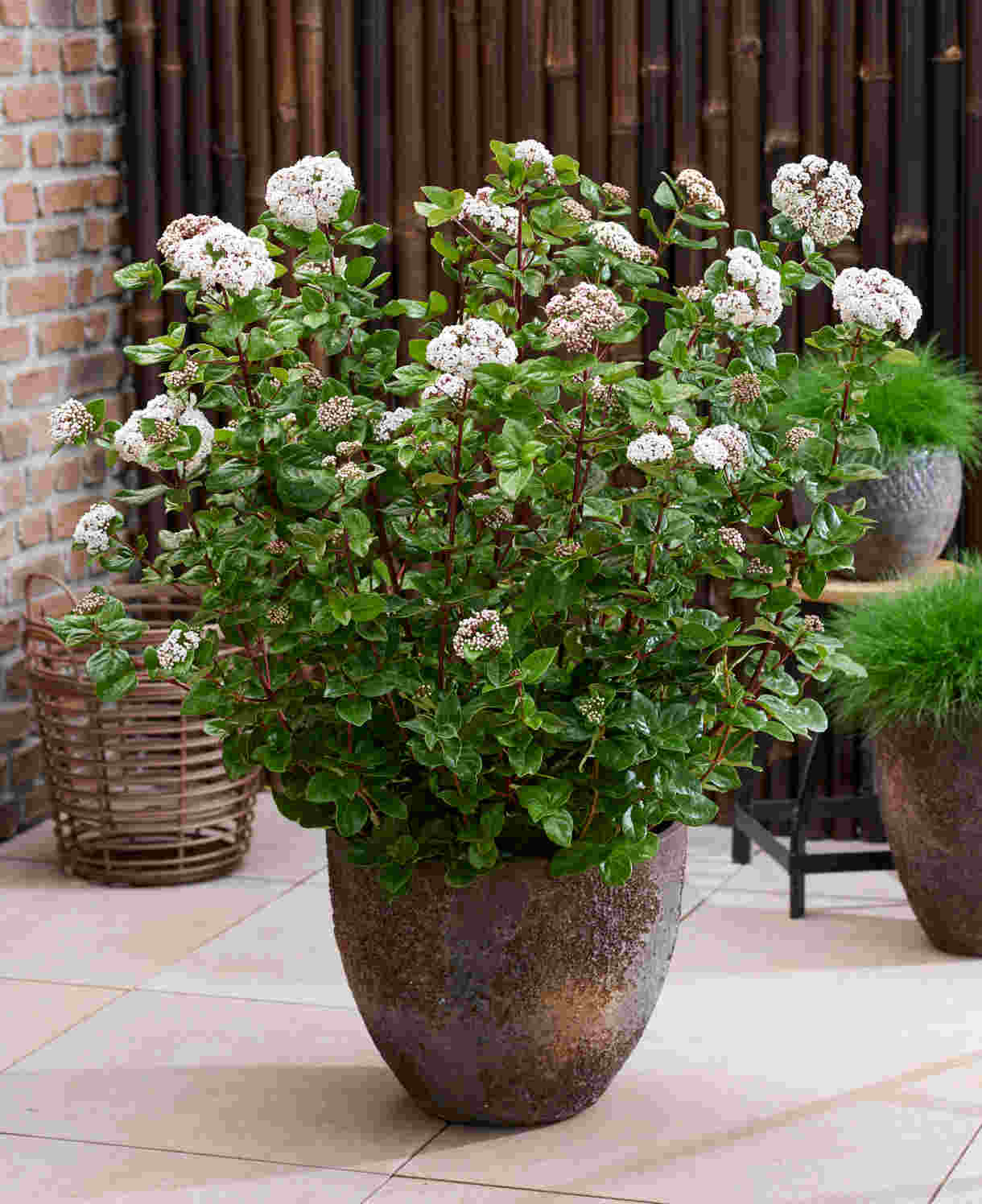
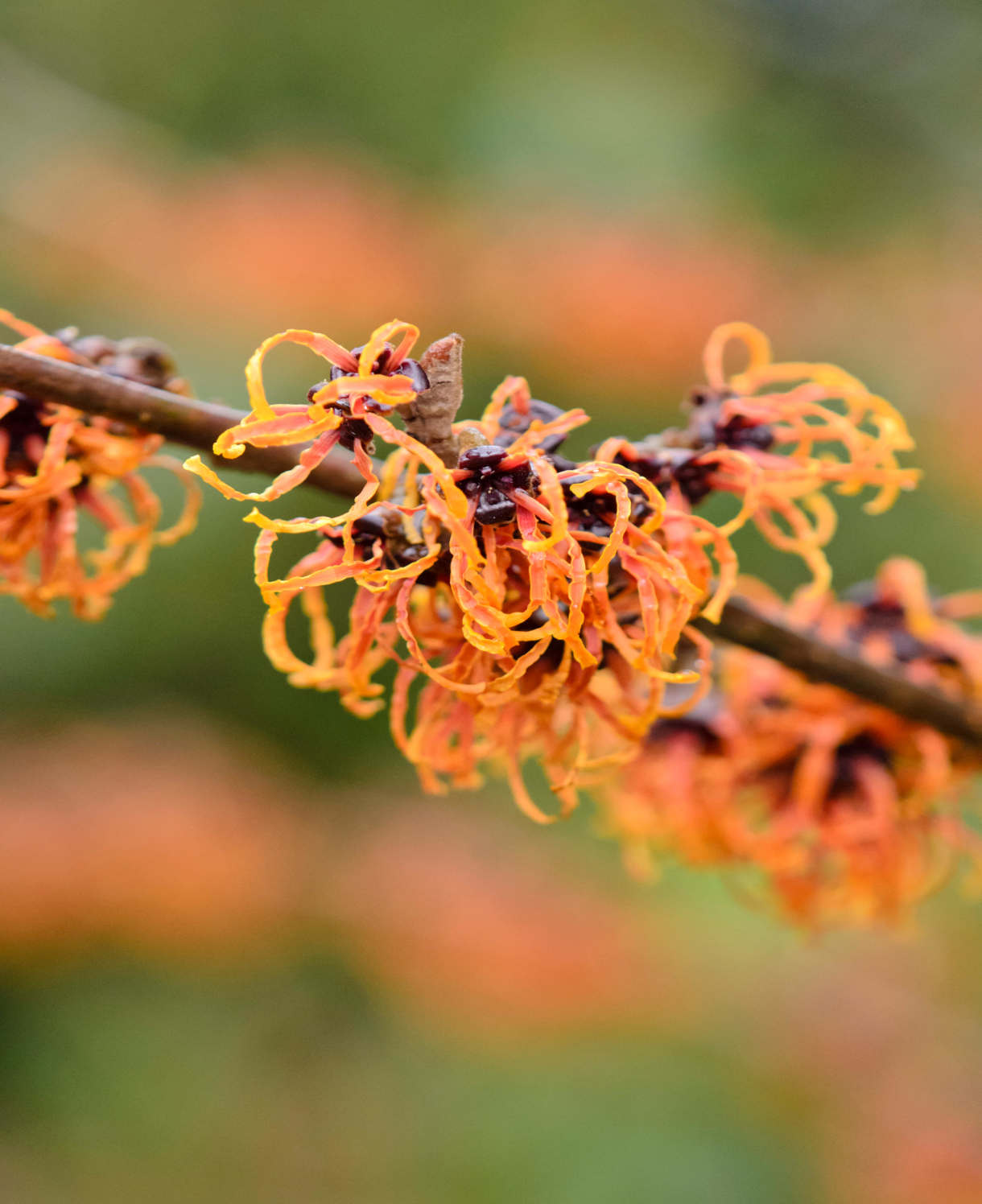

How to care for Loropetalum
Pruning and Deadheading
Loropetalum requires little in the way of regular pruning. If you wish to maintain a particulalry neat, bushy shape, you can give it a light trim immediately after flowering. Any dead, diseased, or damaged branches can be removed at this time too.
Watering
Water until established (usually throughout the first growing season in the ground) and then in very dry spells thereafter.
Container-grown loropetalum will require regular watering throughout the growing season. Allow the top few centimetres of compost to dry out between soakings.
Cold Protection
Most loropetalum are hardy to around -5°C, meaning they do best in milder parts of the country or in urban microclimates. Where temperatures are expected to drop below this, either go for the extra hardy ‘Ruby Snow’ cultivar (hardy to -10°C) or grow your loropetalum in a container and overwinter under cover. An unheated greenhouse or conservatory are both ideal.
Pests and Diseases
Loropetalum tends to be problem-free.
How to propagate Loropetalum
Take semi-ripe cuttings in late summer, using the current year’s growth which by then will be firm and woody at the base while still soft and pliable at the tip.
- Choose non-flowering stems which meet the description above and snip off the plant, aiming to take a longer piece than the ideal eventual length of around 10cm (to allow for trimming).
- Put in a plastic bag straight away to prevent drying out.
- Fill a pot (or several, if you have a lot of cuttings) with a perlite-heavy compost mix (at least 50% perlite).
- Trim the end of the cutting to just below a node (point at which leaves grow).
- Remove lowest leaves and soft tip, leaving 2-4 leaves.
- If the remaining leaves are large, cut them in half with a sharp knife (to reduce water lost through transpiration).
- Insert the cuttings into the compost and water lightly. Several cuttings can be put in the same container if there is enough space to do this without them touching.
- Place in a greenhouse or propagating unit if you have one or covered with a plastic bag on a windowsill if not (out of direct sunlight).
- Keep the cuttings misted and occasionally watered until they root. You will know this has happened when roots emerge out of the bottom of the container.
- Gently remove rooted cuttings and pot them into individual pots. Grow on in a cool yet frost-free environment such as an unheated conservatory, greenhouse, or cold frame, until they are large enough to be planted out as above.
Common Loropetalum questions
How fast does loropetalum grow?
Loropetalum has a fairly slow growth rate. Expect little more than a ground-covering mound for a good few years.
Does loropetalum spread?
No, this compact, slow-growing shrub tends to keep to itself in a garden environment.
Is loropetalum easy to grow?
Providing it is given the right conditions, loropetalum makes an easy, fuss-free member of the garden.
